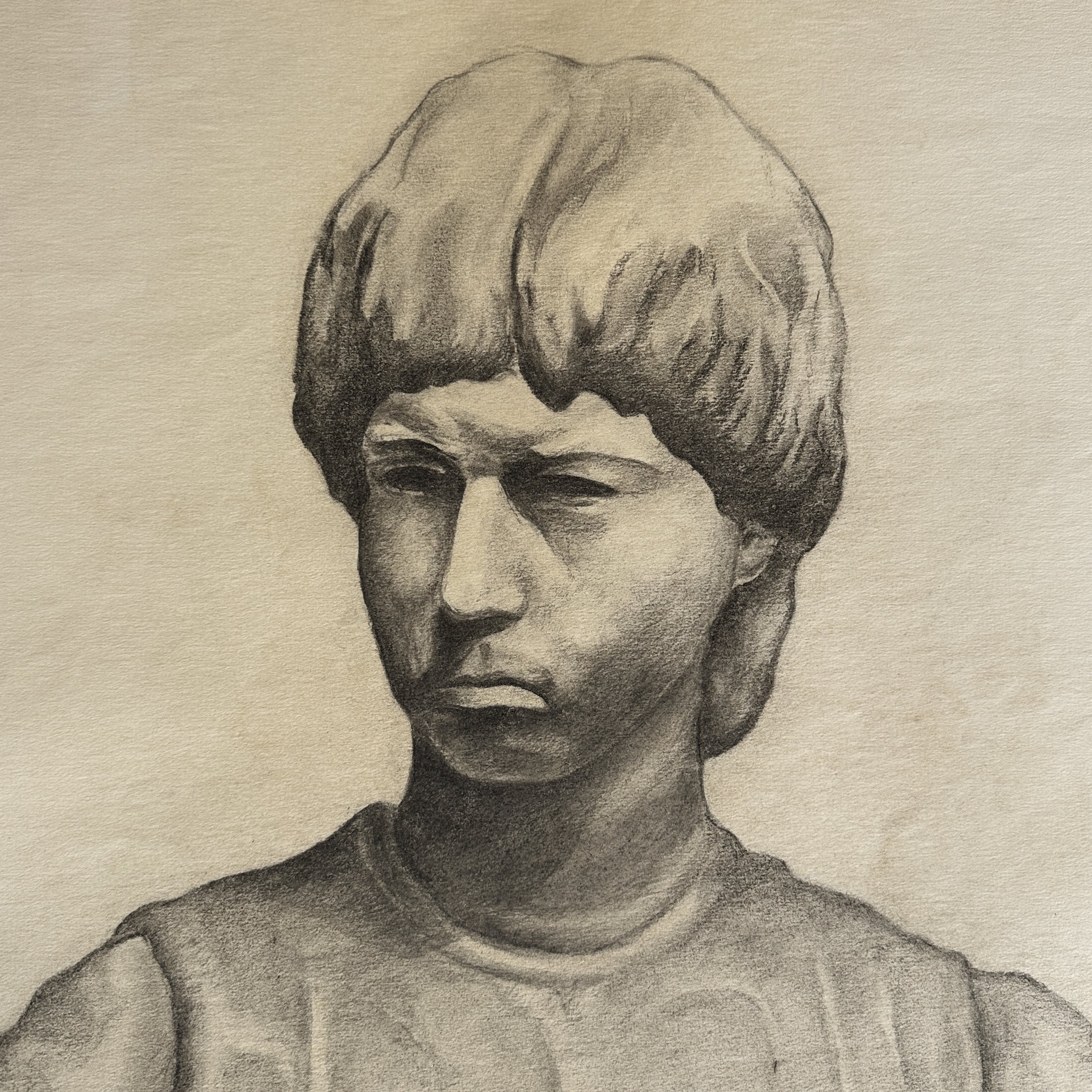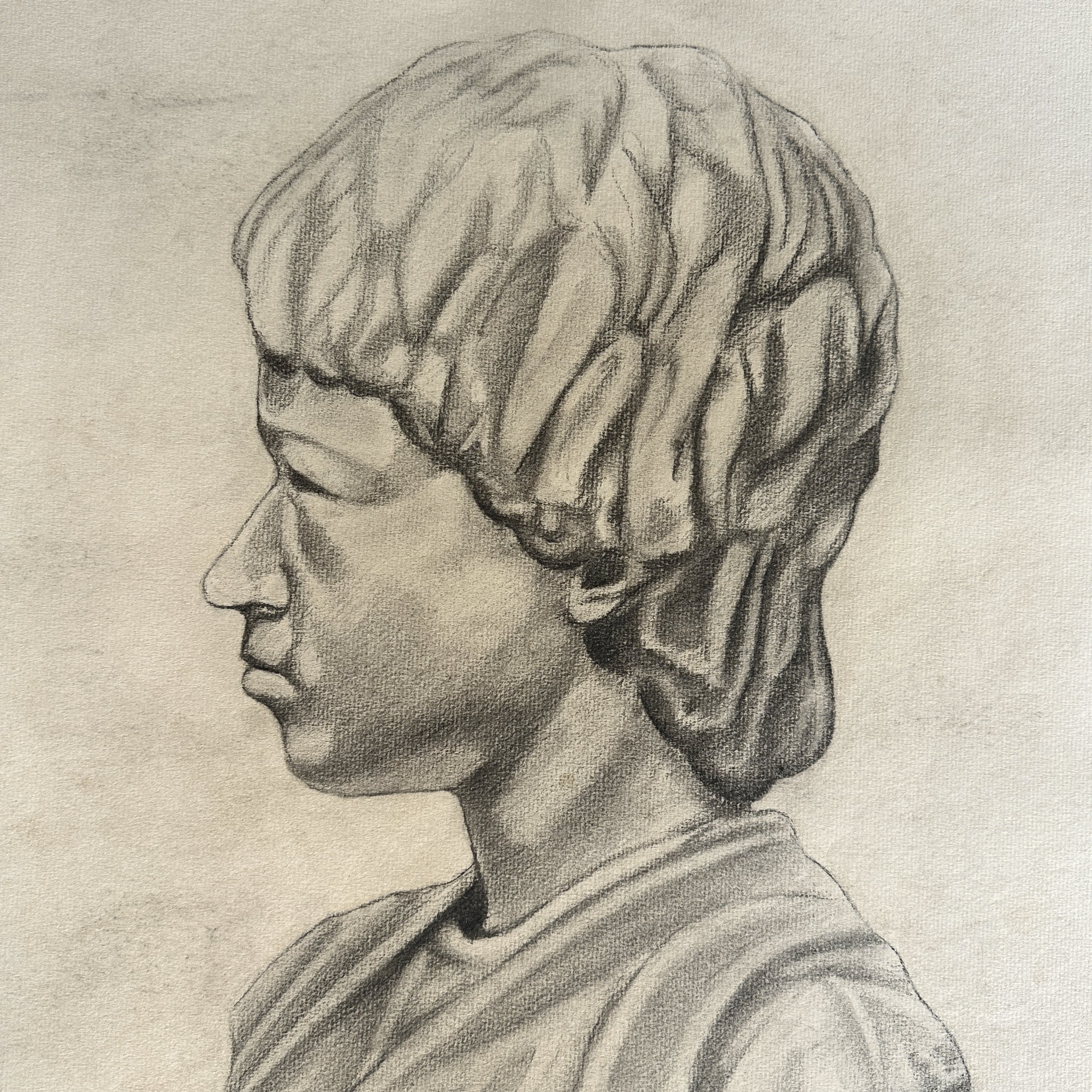 Image 1 of 4
Image 1 of 4

 Image 2 of 4
Image 2 of 4

 Image 3 of 4
Image 3 of 4

 Image 4 of 4
Image 4 of 4





Julius Bloch (American, 1888-1966) - Expressionist Figurative Study, Signed (c. 1940, Ink/Charcoal/Pastel on Paper)
Julius Bloch (American, 1888-1966) - Expressionist Figurative Study, Signed (c. 1940, Ink/Charcoal/Pastel on Paper). Nude female at table in ink and charcoal with areas of pastel. In very good condition. with wear consistent with age. Small dot from foxing in the lower left corner of matte. Matted and framed under UV filtering glass.
Size: 17 x 20 in
Bloch trained at the Pennsylvania Museum and School of Industrial Art (now the University of the Arts) and then at the Pennsylvania Academy of the Fine Arts (PAFA). After serving in World War I, he took classes at the Barnes Foundation. While his contemporaries were exploring modernism, Bloch favored the realism he had studied at PAFA and depictions of urban life created by members of the Ashcan School, both of which were well matched with the economic downturn of the 1930s. He regularly published lithographs in New Masses, which showcased politicized, working-class imagery. With the formation of the Public Works of Art Project, Bloch became one of the first artists employed by the federal government and would gain nationwide attention when his work was recognized by First Lady Eleanor Roosevelt.
A beloved instructor, Bloch taught at PAFA for fifteen years. He maintained close ties with Philadelphia’s black community, exhibiting at the Pyramid Club and frequently taking African Americans as his subjects. On a trip to Italy in 1951, he became preoccupied with Byzantine art and applied its conventions to his own work. In the last decades of his career, Bloch moved away from politicized images in favor of experiments with color and flattened space. He died in 1966.
Julius Bloch (American, 1888-1966) - Expressionist Figurative Study, Signed (c. 1940, Ink/Charcoal/Pastel on Paper). Nude female at table in ink and charcoal with areas of pastel. In very good condition. with wear consistent with age. Small dot from foxing in the lower left corner of matte. Matted and framed under UV filtering glass.
Size: 17 x 20 in
Bloch trained at the Pennsylvania Museum and School of Industrial Art (now the University of the Arts) and then at the Pennsylvania Academy of the Fine Arts (PAFA). After serving in World War I, he took classes at the Barnes Foundation. While his contemporaries were exploring modernism, Bloch favored the realism he had studied at PAFA and depictions of urban life created by members of the Ashcan School, both of which were well matched with the economic downturn of the 1930s. He regularly published lithographs in New Masses, which showcased politicized, working-class imagery. With the formation of the Public Works of Art Project, Bloch became one of the first artists employed by the federal government and would gain nationwide attention when his work was recognized by First Lady Eleanor Roosevelt.
A beloved instructor, Bloch taught at PAFA for fifteen years. He maintained close ties with Philadelphia’s black community, exhibiting at the Pyramid Club and frequently taking African Americans as his subjects. On a trip to Italy in 1951, he became preoccupied with Byzantine art and applied its conventions to his own work. In the last decades of his career, Bloch moved away from politicized images in favor of experiments with color and flattened space. He died in 1966.
Julius Bloch (American, 1888-1966) - Expressionist Figurative Study, Signed (c. 1940, Ink/Charcoal/Pastel on Paper). Nude female at table in ink and charcoal with areas of pastel. In very good condition. with wear consistent with age. Small dot from foxing in the lower left corner of matte. Matted and framed under UV filtering glass.
Size: 17 x 20 in
Bloch trained at the Pennsylvania Museum and School of Industrial Art (now the University of the Arts) and then at the Pennsylvania Academy of the Fine Arts (PAFA). After serving in World War I, he took classes at the Barnes Foundation. While his contemporaries were exploring modernism, Bloch favored the realism he had studied at PAFA and depictions of urban life created by members of the Ashcan School, both of which were well matched with the economic downturn of the 1930s. He regularly published lithographs in New Masses, which showcased politicized, working-class imagery. With the formation of the Public Works of Art Project, Bloch became one of the first artists employed by the federal government and would gain nationwide attention when his work was recognized by First Lady Eleanor Roosevelt.
A beloved instructor, Bloch taught at PAFA for fifteen years. He maintained close ties with Philadelphia’s black community, exhibiting at the Pyramid Club and frequently taking African Americans as his subjects. On a trip to Italy in 1951, he became preoccupied with Byzantine art and applied its conventions to his own work. In the last decades of his career, Bloch moved away from politicized images in favor of experiments with color and flattened space. He died in 1966.















